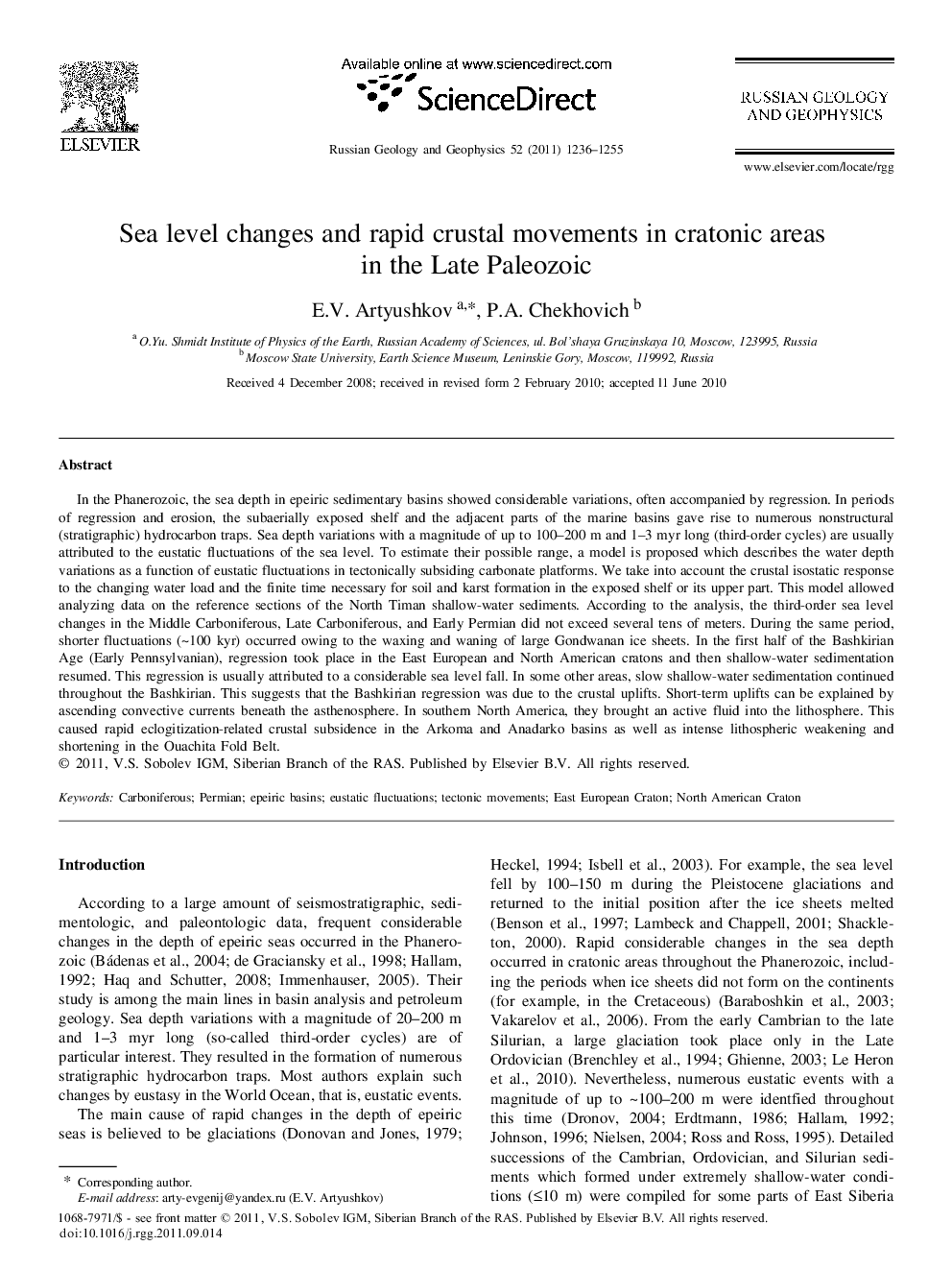| کد مقاله | کد نشریه | سال انتشار | مقاله انگلیسی | نسخه تمام متن |
|---|---|---|---|---|
| 4738595 | 1358335 | 2011 | 20 صفحه PDF | دانلود رایگان |

In the Phanerozoic, the sea depth in epeiric sedimentary basins showed considerable variations, often accompanied by regression. In periods of regression and erosion, the subaerially exposed shelf and the adjacent parts of the marine basins gave rise to numerous nonstructural (stratigraphic) hydrocarbon traps. Sea depth variations with a magnitude of up to 100–200 m and 1–3 myr long (third-order cycles) are usually attributed to the eustatic fluctuations of the sea level. To estimate their possible range, a model is proposed which describes the water depth variations as a function of eustatic fluctuations in tectonically subsiding carbonate platforms. We take into account the crustal isostatic response to the changing water load and the finite time necessary for soil and karst formation in the exposed shelf or its upper part. This model allowed analyzing data on the reference sections of the North Timan shallow-water sediments. According to the analysis, the third-order sea level changes in the Middle Carboniferous, Late Carboniferous, and Early Permian did not exceed several tens of meters. During the same period, shorter fluctuations (∼100 kyr) occurred owing to the waxing and waning of large Gondwanan ice sheets. In the first half of the Bashkirian Age (Early Pennsylvanian), regression took place in the East European and North American cratons and then shallow-water sedimentation resumed. This regression is usually attributed to a considerable sea level fall. In some other areas, slow shallow-water sedimentation continued throughout the Bashkirian. This suggests that the Bashkirian regression was due to the crustal uplifts. Short-term uplifts can be explained by ascending convective currents beneath the asthenosphere. In southern North America, they brought an active fluid into the lithosphere. This caused rapid eclogitization-related crustal subsidence in the Arkoma and Anadarko basins as well as intense lithospheric weakening and shortening in the Ouachita Fold Belt.
Journal: Russian Geology and Geophysics - Volume 52, Issue 10, October 2011, Pages 1236-1255